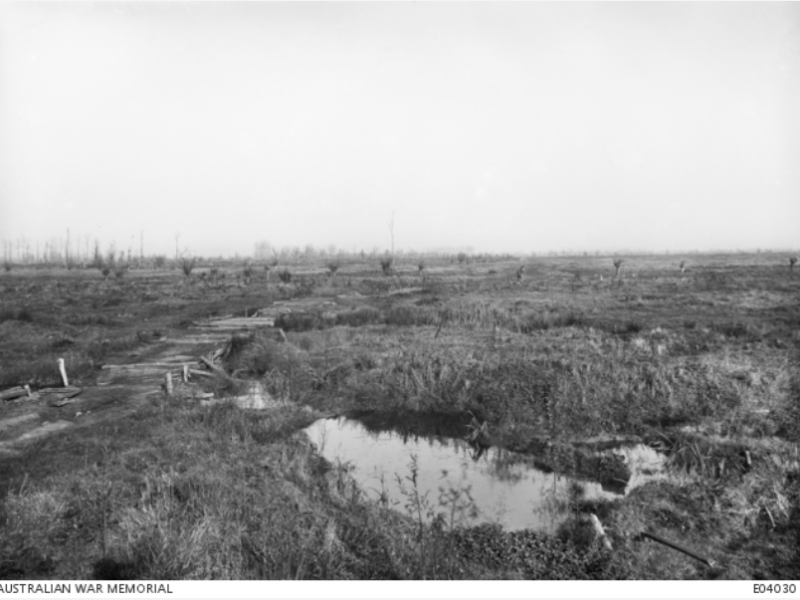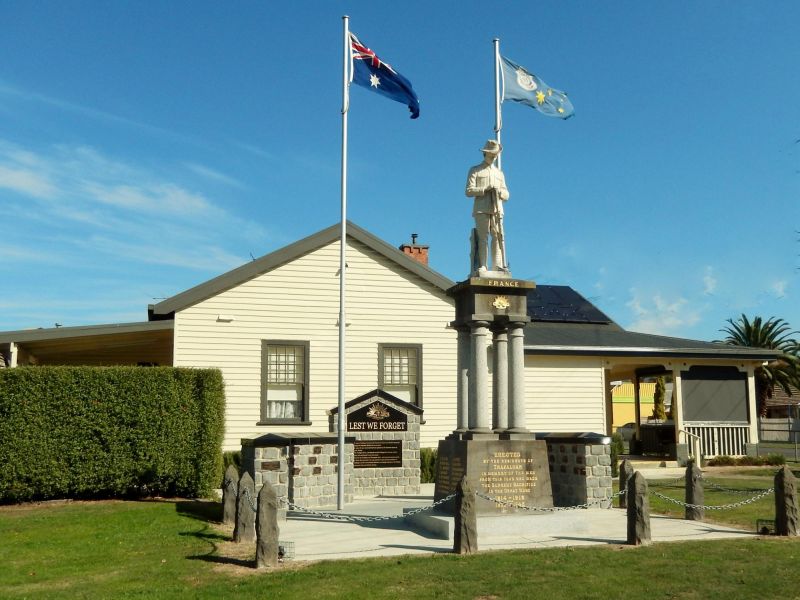Private Francis George Gilbee, 60th Battalion, AIF
Francis Gilbee was born in 1890, one of six children of Frederick and Annie Gilbee of Darlimurla in Victoria.
He attended school at Darlimurla State School before the family moved to Trafalgar in the years before the war. After finishing school Francis worked as a compositor and printer at the Trafalgar and Yarragon Times and was a member of the local rifle club.
Four of the five Gilbee brothers enlisted in the Australian Imperial Force in the early stages of the war.
Perhaps motivated by his younger brother Sydney, who had enlisted in 1914 and fought on Gallipoli, Francis travelled to Melbourne and enlisted in the AIF in October 1915. After several months spent training at Broadmeadows Camp on the edge of the city, he embarked for Egypt with a reinforcement group for the 7th Battalion.
The Gallipoli campaign had ended by the time Francis Gilbee’s troopship arrived in Egypt, so he spent the following months training as the AIF prepared to embark for the fighting on the Western Front. During this time the AIF effectively doubled in size, with fresh reinforcements from Australia populating the newly raised battalions of the 4th and 5th Divisions.
Gilbee transferred to the 60th Battalion in April 1916, and sailed for France with the 5th Division the following weeks.
Despite being in France for less than two weeks, the inexperienced 5th Division was the first Australian formation to go into action on the Western Front. It was allocated the task of attacking German positions near the town of Fromelles in an attempt to occupy German troops and prevent them being sent to the Somme as reinforcements.
The inexperienced Australians and an equally inexperienced British division went into action on the evening of 19 July 1916 in what was ultimately a costly and unsuccessful venture. By the following morning the Australians had suffered some 5,500 casualties in what some historians believe was the worst 24 hours in Australian history.
Among the missing was Francis Gilbee, who had taken part in the 15th Brigade’s full-frontal assault on a German position known as the Sugar Loaf.
An eyewitness to this costly and unsuccessful assault described the air as being “thick with bullets, swishing in a flat lattice of death … Hundreds were mown down in a flicker of an eyelid, like great rows of teeth knocked from a comb.”
From a total strength of 1,000 men, the 60th Battalion suffered some 757 casualties.
Aged just 25 at the time of his death, Francis Gilbee has no known grave, and as such is commemorated on the memorial at VC Corner Cemetery near where he fell. He was the only Gilbee brother to have been killed in the war.
Aaron Pegram, Historian, Military History Section
Image: The old no man's land of Fromelles battlefield viewed from the north-east corner of Sugar Loaf Salient looking towards the line from which the 15th Australian Infantry Brigade began their attack on 19 July 1916.

 Australian War Memorial
Australian War Memorial